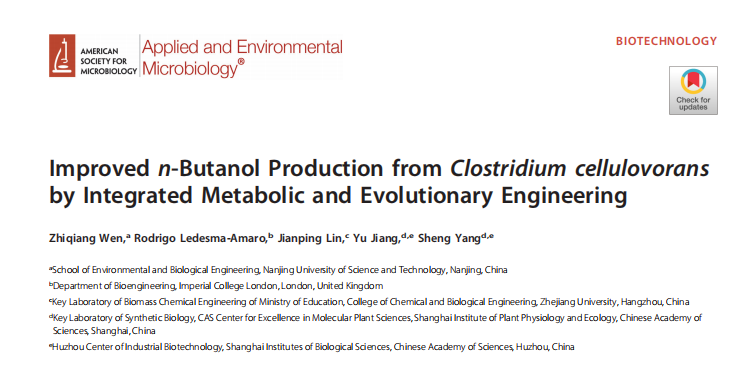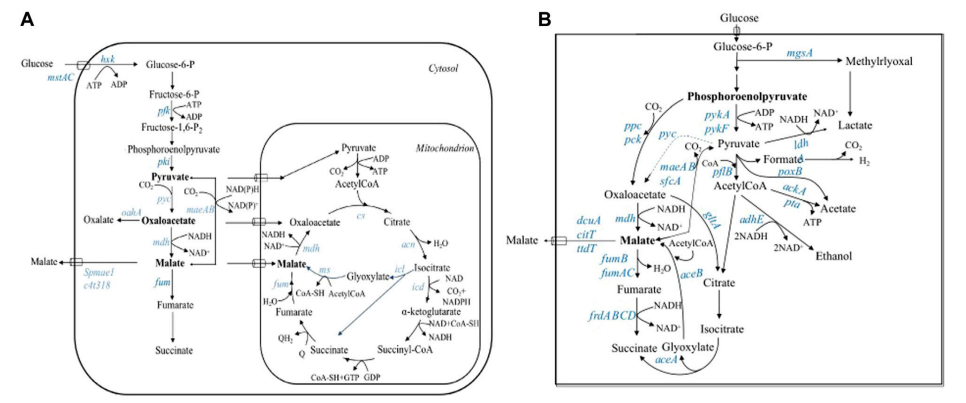
Sterols have various important physiological functions, and their biosynthesis and function have been fully studied in eukaryotes. However, the synthesis and function of bacterial sterols are relatively poorly explored. There are several bacteria known to produce sterols from scratch, including aerobic methane oxidizing bacteria, floating mold, and various slime bacteria. Unlike eukaryotes, these bacteria mainly produce lanosterol, paclitaxel, or cycloatenol, which are the initial cyclization products of squalene oxide cyclase (OSC). In addition, systematic genomics research has expanded the number of potential bacterial sterol producers. Some of these bacteria have the genetic potential to produce complex sterols related to eukaryotic biosynthesis, including cholesterol, but lipid analysis has not yet confirmed the presence of these sterols in bacteria. The difference between the ability of the genome to produce complex sterols and the observed sterols in bacteria has prompted the author to conduct a more comprehensive lipid analysis of sterol producing bacteria. Preliminary analysis of the sterol biosynthesis genes of the marine myxobacterium Enhygromyxa salina by the previous author showed that it had the potential to produce more complex sterols compared to what the author had previously observed. The author assumes that previous analysis may have underestimated the production of bacterial sterols due to limited quantities and/or insufficient lipid extraction techniques, prompting the author to reanalyze the sterols in this bacterium. Similarly, analyzing the genome of blue-green algae Calothrix sp NIES-4105 identified a set of putative sterol biosynthesis genes, including those required for complex sterol biosynthesis, allowing the author to extend sterol analysis to this bacterium.
1 Enhygromyxa salina produces free and bound sterols
E. Salina is a group predatory bacterium that obtains nutrients and energy by killing bacteria. The author cultured E Salina, while Escherichia coli itself does not produce sterols. The author first extracted free lipids from E. salina using the Bligh Dyer extraction method. These preliminary analyses identified various sterols, including cholesterol (Fig. 1a). The author also detected 4,4-dimethylcholesterol-8,24-dienol, an intermediate that is only demethylated at the C-14 position, indicating that E. salina undergoes C-14 demethylation before C-4 demethylation, just like fungi and animals, rather than removing the first C-4 methyl. The author also detected several downstream intermediates that were unsaturated at C-24, including fermentation sterols, cholesta-7,24-dienol, and demethylsterols, but no intermediates were saturated at C-24. Only the accumulation of C-24 unsaturated intermediates indicates that E. salina is beneficial for cholesterol biosynthesis. Finally, in order to prevent potential pollution, the author extracted culture medium without E. salina and concentrated E. coli, and found that both the culture medium and the extraction control did not contain steroids. To evaluate the potential sterol complexes of E. salina, the authors used methanol alkali hydrolyzed total lipid extract (TLE) and cytoplasm, methanol alkali cleavable ester bound lipids, or methanol acid cleavable ester and ether bound lipids. Hydrolysis of TLE with methanol alkali does not release additional sterols, but hydrolysis with methanol acid releases 25-hydroxycholesterol (25-CHO), as well as additional oxygen sterols and other potentially modified sterol compounds (Fig. 1b). The presence of oxidized sterols after acid hydrolysis of TLE, but not after alkaline hydrolysis, indicates that these bonds are mediated by ether bonds. To confirm that these additional sterols are not products of degradation or self oxidation during the hydrolysis process. The author’s acid hydrolyzed cholesterol and demethyl sterol standards did not detect any production of hydroxysterols.

2 E. Salina contains homologues of eukaryotic cholesterol biosynthetic proteins
E. The cholesterol produced by Salina prompted the author to search for its biosynthetic pathway. The author conducted a BLASTp search on sterol biosynthesis enzymes from eukaryotes and bacteria. (<1 × E-30, 30% consistency) selected a limiting cutoff point for these BLASTp searches to better identify enzymes that may be involved in sterol biosynthesis, as enzymes in the cholesterol biosynthesis pathway belong to a large superfamily that includes functions other than sterol biosynthesis. The author detected homologous proteins in almost every step of the cholesterol biosynthesis pathway in eukaryotes in the E. salina genome (Fig. 2), although further biochemical characterization is needed to prove that these homologous proteins do not undergo additional reactions. The sterol biosynthesis genes in the E. salina genome are not located in gene clusters as observed in other sterol producing bacteria, but are found in individual loci throughout the entire genome. The author identified squalene monooxygenase (SMO) and oxidative squalene cyclase (OSC) in 103 bacterial strains and 21 metagenomic assembly genomes. Among these OSCs and SMOs, only other sequenced E. salina strains have homologous proteins required for the eukaryotic cholesterol biosynthesis pathway, indicating that cholesterol production may be a common feature of these E. salina species.

3 C-4 demethylation catalyzed by different bacterial proteins
E. Salina has a homologous protein combination of dioxygenase reductase, and aerobic methane oxidizing bacteria use SdmAB to remove only a single methyl group of C-4. To test whether the E. salina SdmAB homologous protein combination removes the two methyl groups of C-4, the author overexpressed the substrate lanosterol in E. coli (Fig. 3a). The expression of SdmA homologous protein alone leads to the production of 4-aldehyde intermediates, while the expression of SdmB homologous protein alone does not produce any demethylation intermediates. The co expression of SdmAB homologous protein at C-4 does not show any methyl departure (Fig. 3b), indicating that these two proteins are not sufficient to completely demethylate the C-4 position of lanosterol in E. salina, And distinguish SdmAB in E. salina from homologous proteins found in aerobic methane oxidizing bacteria.
The author attempts to determine whether the demethylation of E. salina C-4 is related to SdmA or SdmB. For this purpose, the author utilized the SdmA and SdmB homologous proteins of Mycobacterium capsulatum, which co expressed and removed one methyl from the expression system – and expressed them together with complementary SdmA or SdmB from E. salina. The expression of SdmA from E. salina and SdmB from Staphylococcus capsulatum resulted in the removal of a single methyl group at C-4, while the expression of SdmB from E. salina and SdmA from Staphylococcus capsulatum resulted in no demethylation at C-4. Therefore, the author believes that the E. salina SdmA homologous protein can undergo the oxidative reactions required for demethylation, but the E. salina SdmB homologous protein is not sufficient to undergo the decarboxylation and reduction reactions required for demethylation at the C-4 position. These results led the author to reassess enzymes with potential for decarboxylation and reduction reactions.
By searching for another gene BLASTp in E. salina’s genome, the author identified another SDR type reductase that is homologous to SdmB, SdmC (51%, consensus), limited to the Myxococcota suborder Nannocystaceae. Single expression of SdmC does not lead to the accumulation of any demethylation intermediates. Coexpression of SdmC with SdmA from E. salina results in the removal of a single methyl group at C-4, indicating that SdmC can decarboxylate the oxidized methyl group and reduce the remaining ketones at C-3 to hydroxyl groups, as shown in SdmB of Streptococcus capsulatum (Fig. 3c). In addition, the co expression of SdmC and E. salina SdmAB resulted in the removal of two methyl groups on C-4 and the production of additional demethylation intermediates (Fig. 3d). Therefore, E The demethylation of C-4 in Salina is different from that in aerobic methane oxidizing bacteria and eukaryotes. Although SdmC is limited to specific suborders of myxobacteria, SdmAB homologues can be found in various isolates and genomes (MAGs) obtained from the entire domain. This includes 31 bacterial species from 5 different phyla. The author would like to know if other SdmAB homologous proteins can also demethylate lanosterol, or if they are more similar to SdmAB homologous proteins in aerobic methane oxidizing bacteria and only remove one methyl at C-4.

The genome of blue-green algae Calothrix sp. NIES-4105 contains SdmAB homologous proteins. This gene cluster also contains homologous proteins of oxidized squalene, cyclization, C-14 demethylation, C-8 isomerization, and other proteins that may be involved in sterol biosynthesis (Fig. 4a). The diversity of sterol biosynthesis genes in Calotrix has not been observed before, indicating that Calotrix strains can produce complex sterols that are completely demethylated at the C-4 position.
To verify the hypothesis, the oxidative squalene cyclase in Calotrix was heterologously expressed in Escherichia coli strains that produce oxidative squalene, producing lanosterol, and the functionality of the cyclase in Calotrix was confirmed. Next, the Calotrix SdmAB homologous protein was expressed to determine whether these proteins can be demethylated at C-4. The separate expression of SdmA homologous protein leads to the production of 4-methylaldehyde intermediates, while the separate expression of SdmB homologous protein leads to the production of lanosterone. Calothrix SdmAB co expresses two methyl groups that remove C-4, demonstrating a third bacterial C-4 demethylation pathway that differs from E. salina, aerobic methane oxidizing bacteria, and eukaryotes.

4 Calothrix sp. NIES-4105 may synthesize complex sterols
Given the genetic and biochemical evidence for the production of complex sterols in Calotrix, the author then analyzed the sterols produced by this bacterium. In the preliminary analysis, the author could only detect sterols after acid hydrolysis of cell biomass. These sterols include cholesterol and C-24 unsaturated and C-24 saturated intermediates. We also identified 25-CHO in the hydrolyzed Calotrix extract, further indicating that sterols may bind in Calotrix. However, throughout the process of lipid analysis, Calotrix stopped the production of all sterols. In order to determine whether the loss of sterol production in Calotrix is due to gene mutations in the sterol biosynthesis gene cluster, the authors sequenced the genomes of continuously passed strains and compared them with the reference genome of Calotrix sp. NIES-4105. Compared with the reference genomes available in the JGI IMG and NCBI databases, the author detected 14 mutations in the genomes of continuously passaged strains, but none of these mutations occurred in or upstream of the sterol biosynthesis gene cluster. The author’s research results indeed indicate that blue-green algae are a potential source of biosynthesis of complex sterols, and further consideration needs to be given to blue-green algae when studying bacterial sterol biosynthesis.
Summary
The author demonstrated that bacteria have the ability to de novo synthesize cholesterol, demonstrating the complexity of biosynthesis in eukaryotes. The author’s lipid analysis of E. Salina identified cholesterol and intermediates in the cholesterol biosynthesis pathway. In addition, the author demonstrated that complete demethylation of C-4 is an important step in the biosynthesis of eukaryotic sterols, which is achieved through E Salina is catalyzed by different enzymes and has similar functions in phylogeny to the homologous proteins found in the sterol producing bacterium Calotrix. The author’s analysis of sterol biosynthesis in bacteria with different phylogenetic systems suggests support for the complex biology of bacterial cholesterol production and raises broader questions about sterol biosynthesis, evolution, and function.
CD Biosynsis has established a powerful synthetic biology platform to integrate engineering principles and a broad range of methodologies from various disciplines,Please contact us to discuss your project, and our experts will provide professional services.









